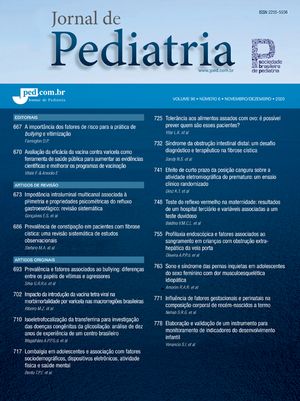
To analyze the importance of natural killer cells, their killer immunoglobulin-like receptors (KIR) and genes in autoimmunity and in the immune surveillance against infectious agents and stem cells transplantation. The characteristics and polymorphisms of the KIR genes and receptors in the Brazilian population is described.
SourcesTextbooks, review articles and recent scientific articles are cited and listed in the references.
Summary of the findingsKIR genes and haplotypes within a Brazilian Caucasian population were surveyed and analyzed to assess the future relationship of this system with diseases. Of 116 voluntary bone marrow donors, we identified 32 genotypes with frequencies of A and B haplotypes of 51 and 49%, respectively. A comparative analysis was performed between these genotypes and those from other populations.
ConclusionsInnate immunity is an important anti-infectious barrier in newborns. It is independent of both cellular and humoral immunity, can be faster and confers great advantage in early age. At the same time, it stimulates CD8 T lymphocytes to act and amplify the immunological protection network. Nevertheless, as in the majority of situations in which immunity is activated, it can also be harmful, damaging the body through autoimmune mechanisms or even, through its absence, creating space for infectious agents to act free. Our study of a control group for KIR genotype and haplotypes in Brazilian Caucasoids could be used in future analyse of diseases related to these genes.
Analisar a importância das células natural killer, de seus receptores killer immunoglobulin-like receptors e correspondentes genes (KIR) na vigilância imunológica do organismo contra agentes infecciosos, transplantes de células-tronco hematopoiéticas, assim como sua participação na auto-imunidade. As características e o polimorfismo dos genes e receptores KIR na população brasileira serão descritos.
Fontes dos dadosLivros, artigos de revisão e artigos científicos recentes são citados e listados na bibliografia. A experiência pessoal é também apresentada.
Síntese dos dadosIdentificamos o perfil de genes e haplótipos KIR na população caucasóide brasileira, sendo de importância esse conhecimento para a análise da relação desse sistema com doenças. Examinamos 116 indivíduos doadores voluntários de medula óssea, identificando-se 32 genótipos e a presença de 51 e 49% de haplótipos A e B, respectivamente. Foi realizado estudo comparativo entre os nossos genótipos e os de outras populações.
ConclusõesA imunidade inata é uma barreira antiinfecciosa de importância em pediatria. Ela atua de maneira independente da imunidade celular e humoral, sendo mais rápida que as demais fontes de proteção do organismo. Ao mesmo tempo, ela estimula os linfócitos T CD8 a agirem e amplificarem a rede de proteção imunológica. Entretanto, como na maioria das vezes em que a imunidade atua, ela também pode ser prejudicial, agredindo o organismo por mecanismos auto-imunes ou mesmo, na sua ausência, oferecer espaço aos agentes infecciosos para agirem de forma impune.








